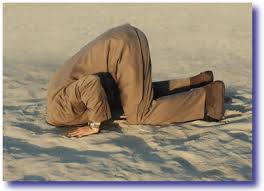With equities sliding and oil pushing back below $30, it may feel like the resumption of moves in the first two and half weeks of the year, but it is different. It is considerably more orderly. The contagion from the equity and oil slide is more limited than previously, and even oil is recovering in the European morning to trade back above $30. European equities opened lower but spent the morning recovering, even if not fully.

The change is also evident in the foreign exchange market. The Australian and Canadian dollars are firm, despite fall in oil and the Shanghai Composite that was off 6.4% and closed at a 13-month low. The greenback initially did drop to JPY117.65 against the yen, but is back above JPY118.30, near the highs of the day.
The bond markets also appear to be taking the equity fall in stride. Core10-year bond yields in Europe are off two bp. Spanish yields are off about the same, while other peripheral yields, outside of Greece are little changed. The US 10-year yield is off a single basis point.
The news stream is particularly light, but the three central bank meetings still lie ahead: the RBNZ, FOMC and BOJ. We do not expect any of the three to change policy, though speculation that the BOJ may continue to be seen. Instead, we suggest that the BOJ’s inflation forecasts may be indicative of how high of a bar there may be to increase the asset purchases from the current JPY80 trillion a year.
The North American calendar is light, with CaseShiller November house prices, the Conference Board’s measure of consumer confidence and the Richmond Fed manufacturing index. Although it is a new time series, the Markit service and composite PMI for January may draw some attention, give the lack of much competing data and investors eager to see if the anticipated weakness in Q4 15 carries into Q1 16.
Given the dramatic start to the year, it makes sense to consider what kind of bottom is likely to form in the equity markets. An “L”-shaped bottom seems to imply that the price action has been driven by a recognition of a deterioration of fundamentals. Subjectively, we would give this the lowest possibility. At the same time a “V”-shaped bottom, we think, does not give proper due to the fragility of the global economy, earnings challenges, and the extent of the recovery since 2009. We see a “W”-shaped bottom as most likely. It gets to the idea that a bottom has to be carved out, and recognizes that some will sell into the initial bounce.















No Comments